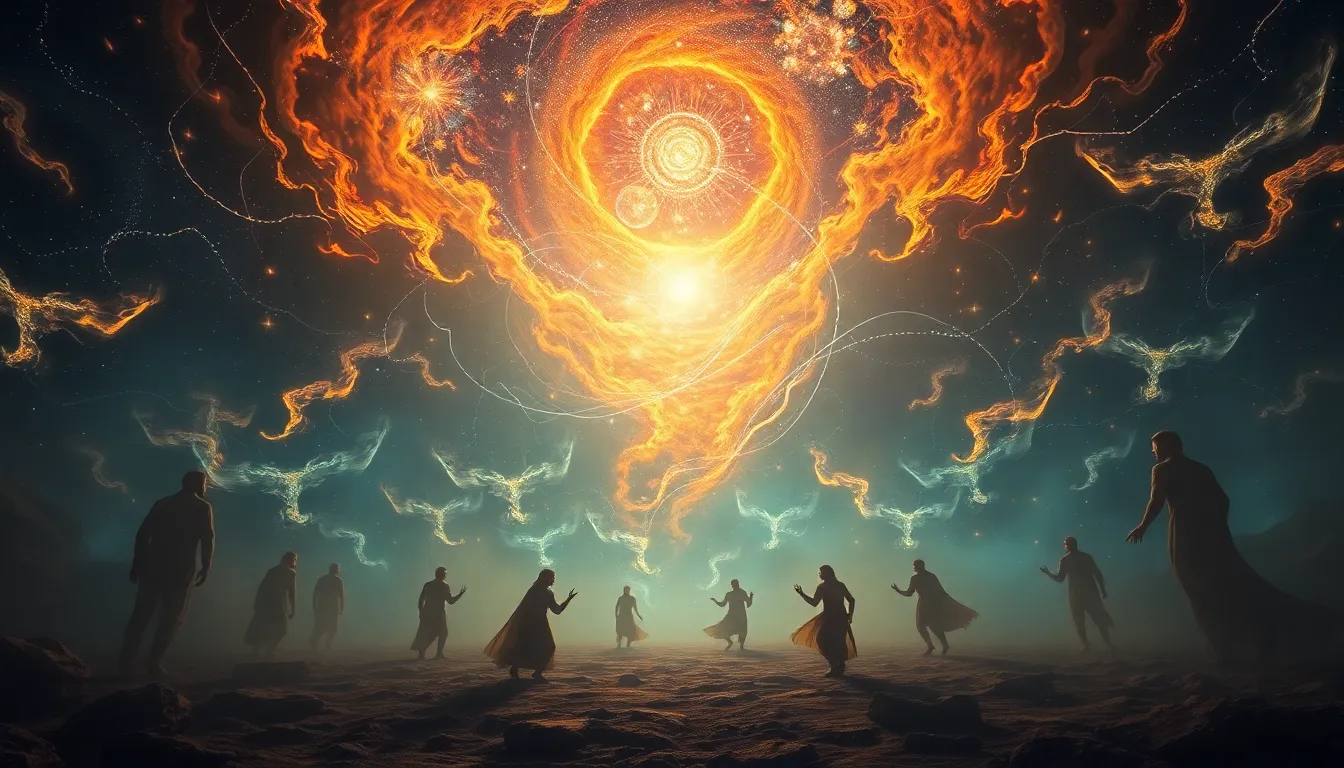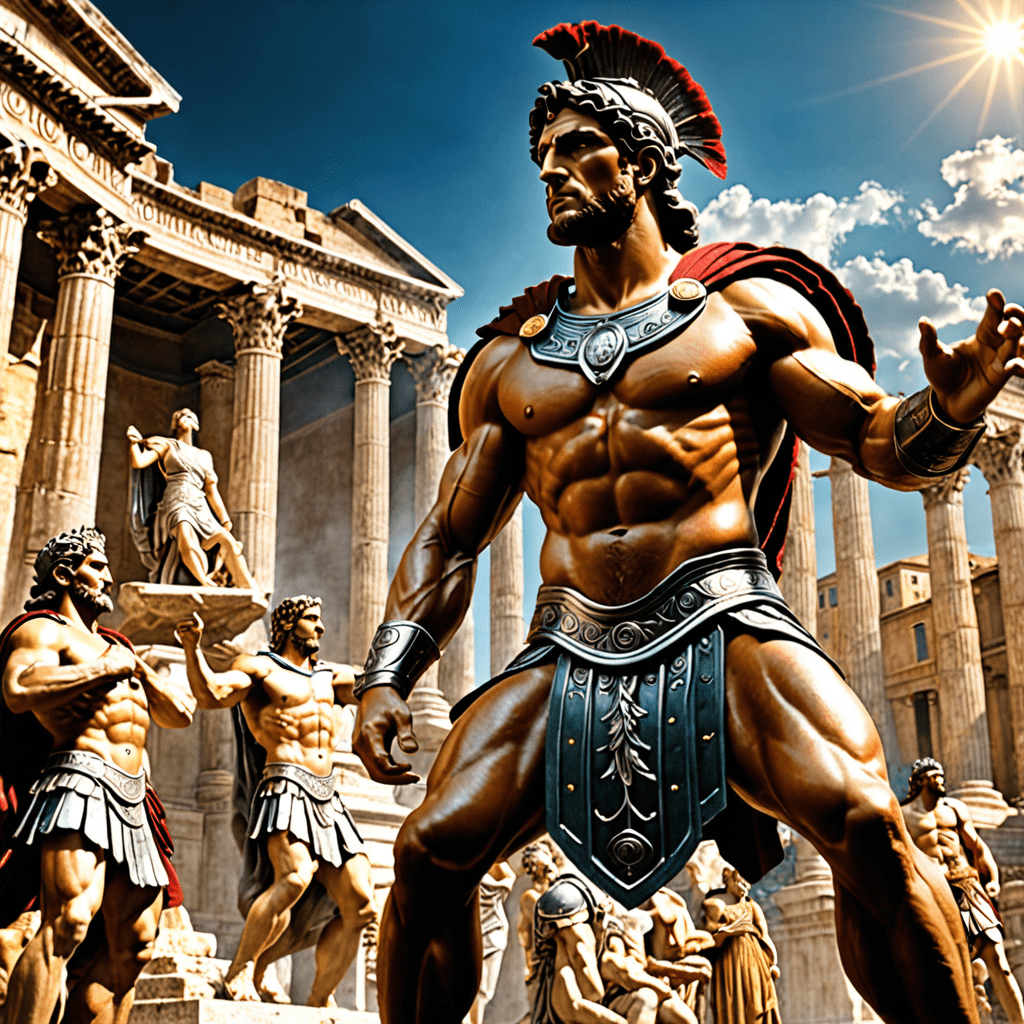The Great Cosmic Dance: Creation Myths Across Cultures
Introduction to Creation Myths
Creation myths are foundational narratives that explain the origins of the universe, humanity, and life itself. They serve not only as stories but also as frameworks through which cultures understand their identity, values, and the nature of existence. In essence, these myths encapsulate the worldview of a society, providing insight into their beliefs, traditions, and ethical principles.
This article explores the theme of the cosmic dance as depicted in various creation myths across cultures. The cosmic dance symbolizes the dynamic interplay between chaos and order, reflecting humanity’s relationship with the cosmos. As we delve into different cultural narratives, we will uncover how they express universal themes of creation, existence, and interconnectedness.
The Concept of the Cosmic Dance
The metaphor of a “cosmic dance” describes the intricate and harmonious movements of celestial bodies, natural forces, and spiritual energies that shape the universe. In many creation stories, this dance illustrates the balance between chaos and order, a fundamental aspect of existence.
Creation myths often depict the universe as emerging from a primordial chaos, where divine or cosmic entities engage in a dance that brings forth order and structure. This dance reflects the interconnectedness of all elements of existence, emphasizing the relationship between humanity and the cosmos. Key characteristics of the cosmic dance include:
- Interconnectedness: Everything in the universe is linked through a web of relationships.
- Dynamic Balance: Creation is an ongoing process, where change and stability coexist.
- Divine Participation: Deities or cosmic forces actively engage in the dance of creation.
Creation Myths in Indigenous Cultures
Indigenous cultures around the world have rich and diverse perspectives on creation. These myths often emphasize the sacredness of nature and the interconnectedness of all living beings. A prominent example is the Dreamtime stories of Australian Aboriginal cultures, which explain the creation of the land and its inhabitants through the actions of ancestral beings.
In these narratives, the landscape itself is infused with meaning, as every rock, river, and tree is connected to the stories of creation. The concept of interconnectedness is central to these stories, highlighting that the well-being of humanity is directly tied to the health of the natural world. Key themes in indigenous creation myths include:
- The role of ancestors in shaping the earth.
- The importance of harmony between humans and nature.
- The cyclical nature of existence and renewal.
Eastern Creation Myths: Harmony and Balance
In Eastern philosophies, creation myths often center around concepts of harmony, balance, and duality. Hindu creation myths, for instance, describe the universe emerging from the cosmic ocean known as Kshira Sagara. In this narrative, the god Vishnu rests on the serpent Ananta, and from his navel sprouts a lotus, which gives rise to Brahma, the creator deity.
Taoism, on the other hand, presents a different perspective, emphasizing the creation of the universe through the Tao, an all-encompassing principle that embodies the natural order. In both Hinduism and Taoism, duality—such as yin and yang or creation and destruction—plays a significant role in understanding existence.
Key elements of Eastern creation myths include:
- Harmony between opposing forces (e.g., light and dark, creation and destruction).
- The cyclical nature of life, death, and rebirth.
- The belief in a universal interconnectedness of all beings.
Western Creation Narratives: From Chaos to Order
Western creation narratives are often rooted in Judeo-Christian traditions, with the Book of Genesis providing a foundational account of creation. In this narrative, God creates the world in six days, bringing order out of chaos through divine command. This story emphasizes the power of a singular deity who shapes the cosmos according to divine will.
Greek mythology also explores themes of chaos and order, most notably in the story of Gaia (Earth) and Uranus (Sky), who emerge from primordial chaos. Their offspring, the Titans, further shape the world, introducing complex relationships and conflicts that mirror human experiences.
Key themes in Western creation narratives include:
- The transition from chaos to order through divine intervention.
- The concept of a singular, omnipotent creator.
- The moral and ethical implications of creation.
African Creation Myths: The Role of the Divine
African creation myths vary widely across the continent, often highlighting the role of deities and ancestral spirits. Many stories emphasize a divine creator’s actions in shaping the world and humanity. For example, the Dogon people of Mali have a rich cosmological framework that describes the creation of the universe through the actions of their deities.
Oral tradition plays a crucial role in preserving these myths, allowing them to transmit cultural values and teachings across generations. These narratives often convey profound insights about the relationship between the divine and the earthly realm.
Key components of African creation myths include:
- The involvement of multiple deities in the creation process.
- The significance of oral storytelling in preserving cultural heritage.
- The moral lessons imparted through creation narratives.
The Americas: Diverse Creation Stories
Native American creation myths reflect the diversity of tribes and their unique relationships with the land. Many stories emphasize the importance of nature and the spiritual connection between humans and the environment. A notable example is the Iroquois creation story, which features Sky Woman, who falls from the sky and creates the earth from the waters below.
These narratives often illustrate how landscapes and ecosystems shape cultural identities and beliefs. The environment is not merely a backdrop but an active participant in the creation story, influencing the way people see their place in the world.
Key aspects of Native American creation myths include:
- The role of women in creation narratives.
- The significance of specific landscapes and natural elements.
- The emphasis on harmony and balance within ecosystems.
The Influence of Science on Modern Creation Myths
As scientific discoveries have advanced, the intersection of creation myths and scientific theories has become a rich area of exploration. Concepts such as the Big Bang and evolution challenge traditional narratives while also finding parallels in ancient myths. Both science and mythology seek to explain existence, albeit through different lenses.
Contemporary narratives often reflect ancient themes, such as creation from chaos or the cyclical nature of time. As society grapples with questions of existence and creation, these ancient stories continue to resonate, offering insights into the human experience.
Key themes in modern creation narratives include:
- The reconciliation of science and spirituality.
- The ongoing quest for understanding our origins.
- The reflection of ancient myths in contemporary narratives.
The Common Threads of Creation Myths
Across various cultures, creation myths reveal recurring themes that reflect universal human questions about existence. These themes include:
- Chaos and order: The emergence of structure from an initial state of disorder.
- Divine intervention: The role of gods or cosmic forces in shaping the universe.
- Cyclical time: The idea that creation, destruction, and rebirth are part of a continuous cycle.
These shared motifs highlight the interconnectedness of human cultures and their attempts to understand the cosmos. By exploring creation myths, we gain insight into the values, beliefs, and aspirations of different societies, ultimately enriching our understanding of our own existence and place in the universe.




